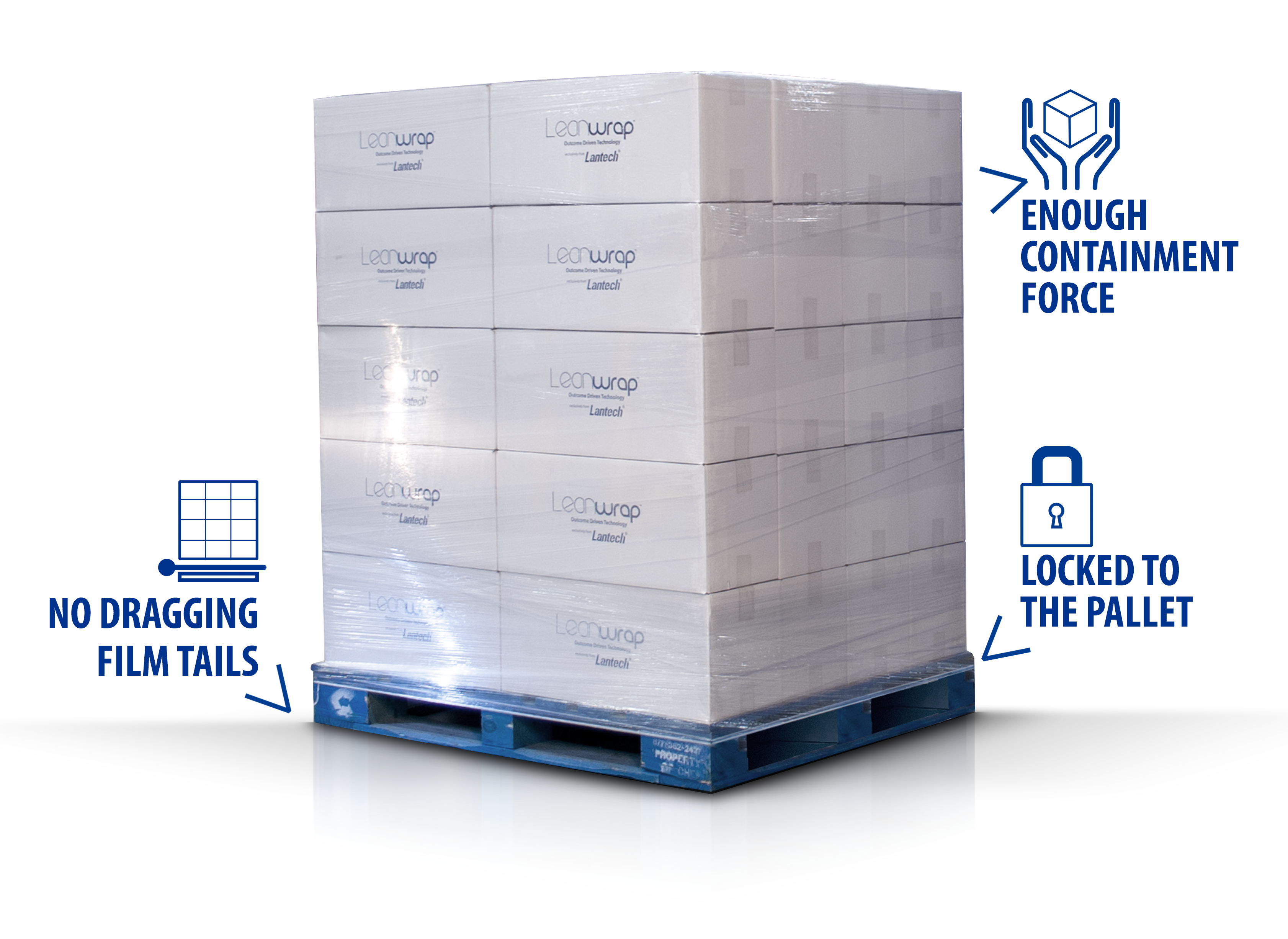Global shipping damage amounts to more than $60 billion annually. About half of  that damage is the result of poor stretch wrapping.
that damage is the result of poor stretch wrapping.
You can do your part to reduce much of this unnecessary damage by heeding these three core stretch wrapping principles:
#1: Make sure your load has enough containment force – the squeezing force of the film around the load.
When loads travel down the highway or a train track to your customers, they must survive vibration and multiple sharp turns. Sometimes these “mini earthquakes” cause loads that aren’t stretch wrapped properly – and may not have enough containment force – to fall apart.
To make sure you have enough containment force (typically measured in pounds), you should periodically measure your loads with a tool specially designed for the task. There are several types available. Learn how to measure containment force.
If you don’t know what your load’s containment force should be or want to double check the amount you’re currently using, download a copy of our containment force guidelines. And if you need more help, contact us at lantech.com.
#2: Lock your load to its pallet so it doesn’t slide off.
Millions of loads slide off their pallets every year because they weren’t properly secured to them. Often, people apply film all the way down to the bottom of the pallets. Unfortunately, when forklifts pick up the loads, the forks puncture the film. The puncture holes may spread up the load, jeopardizing its containment force and creating opportunities for it to slide off the pallet or for other bad things to happen.
However, stretch wrappers with effective load-to-pallet bonding devices overcome this problem. Look for stretch wrappers that roll the bottom 3-5 inches of film into a tight film cable during the last seconds of the wrapping cycle and place the cable just below the top board of the pallet. The film cable’s placement will avoid forklift punctures and lock the load to the pallet. Click here to see how Lantech manages the load-to-pallet bond.
#3: Eliminate long or dragging film tails.
Dragging film tails can get tangled in downstream equipment, including conveyors, forklifts and other equipment found in factories, distribution centers and large warehouses. When a long film tail snags, it could cause the load to topple.
Also, a long film tail may also unravel during the multiple times it’s handled during transit.
As with most endeavors, success comes with understanding and applying a set of fundamental principles. Stretch wrapping is no different. Don’t stop with these. Learn more about reducing damage by downloading our 10 Step Process for Damage ReductionThrough More Effective Stretch Wrapping.
This post was published on October 14, 2015 and updated on November 12, 2019.
October 14, 2015

